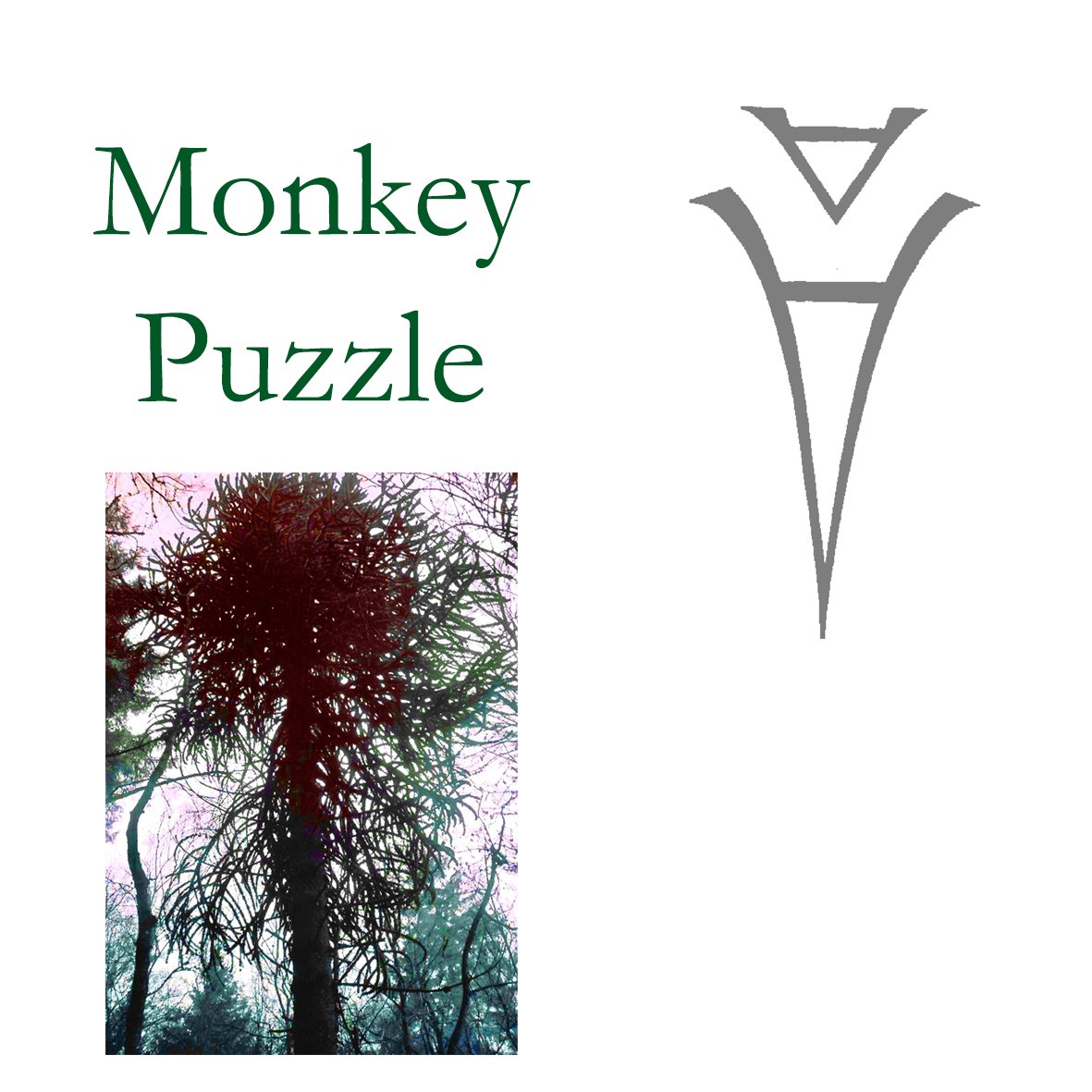MONKEY PUZZLE TREE (Araucacia araucana)
Key: Fierce compassion
The Chile pine, known throughout Britain by its Victorian name the “monkey puzzle tree”, is native to a small area around the Andean mountain, Volcan Llaima. Its name derives from the Araucanian peoples who depend quite heavily on the large seeds as a food source. Five seedlings were brought back to Kew Gardens in 1795 by botanist Alexander Menzies who had never seen a specimen in the wild. In 1884 more seeds were brought from Chile and the major plantings took place then. The tree is unmistakable with each branch completely covered in overlapping, dark green, rigid leaves. Male and female flowers appear on separate trees, the fertilised cone ripening over three years. The monkey puzzle can grow to 80ft (24m) and has a neat, domed crown often losing its lower branches. It is fairly short-lived, averaging 100 years.
The monkey puzzle tree is characterised by action that is expressed through caring, understanding and compassion. It will calm aggression but still allows that energy to be manifested in a creative, forceful way. The essence is strongly energising, earthing and protecting from negativity.
One particular characteristic of this tree is that it enables a great understanding and the experience of joyfulness in witnessing the continuous cycles of change upon the planet – sunrise to sunset, day and night, heat and cold, summer and winter, activity and stillness. The perception of the underlying stability and continuity of awareness running throughout, expands the sense of time and space. This enlarged view helps the release of tension and anxiety. Talking to the long memory of the planet, and becoming enfolded within the story.
Signature: The way each leaf overlaps from the last suggests the overlapping and continuous cycles of growth and time. The nuts were the main sustaining food crop of the Araucanian people: a fierce tree providing plentiful harvests.
Comment: In Britain the monkey-puzzle is synonymous with Victorian park and garden planning, and with that period’s rather fusty provincialism. It takes a fresh vision to go beyond this accreted, received view to see the tree in the context of its own energy.

